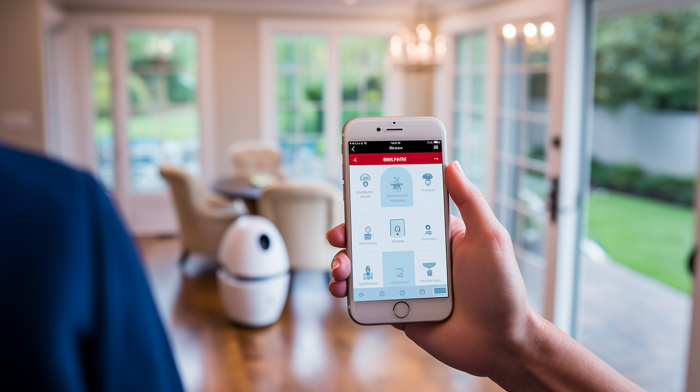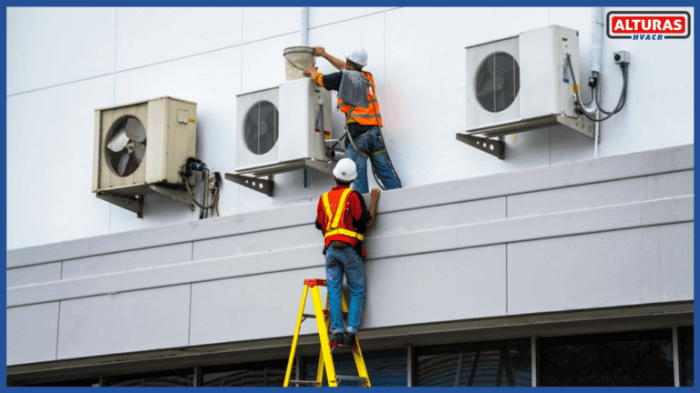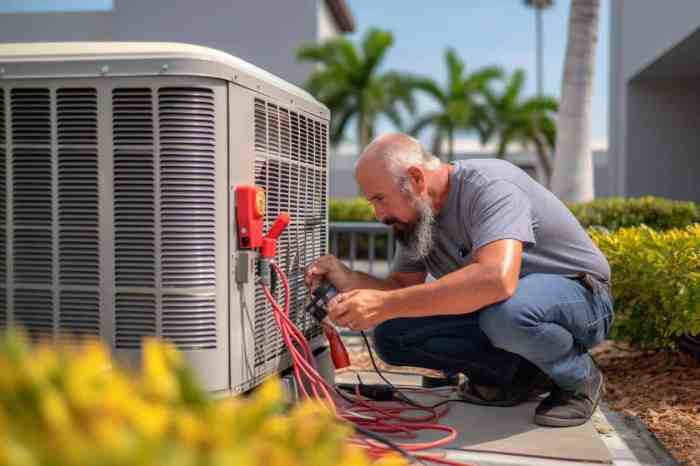Embark on a journey into the realm of smart security system installation, where the fusion of technology and safety brings peace of mind to homes and businesses alike. This guide delves into the intricacies of setting up a smart security system, from the essential components to the seamless integration with modern devices.
Explore the nuances of planning, executing, and optimizing a smart security system installation to fortify your surroundings with cutting-edge protection.
Smart Security System Installation

Installing a smart security system is essential for both homes and businesses to ensure the safety and protection of property, assets, and individuals. These systems provide advanced features such as real-time monitoring, remote access, and alerts, enhancing overall security measures.
Basic Components for Smart Security System Installation
- Security Cameras: These are crucial for capturing video footage of the premises.
- Motion Sensors: Detect any movement within the monitored area and trigger alerts.
- Control Panel: Acts as the central hub to manage the system and receive notifications.
- Smartphone App: Allows users to monitor the system remotely and receive alerts on their mobile devices.
- Alarm System: Sounds an alarm in case of any security breach or unauthorized entry.
Wired vs. Wireless Smart Security System Installations
When it comes to smart security system installations, there are two main types: wired and wireless. Each has its own set of advantages and considerations.
- Wired Systems:Require cables to connect components, offering a reliable connection and no interference from other wireless devices. However, installation can be complex and may require professional assistance.
- Wireless Systems:Easier to install without the need for cables, making them more flexible and suitable for rental properties. They may be susceptible to signal interference or hacking, but advancements in technology have improved their reliability.
Planning and Preparation
When planning for the installation of a smart security system, it is crucial to start with a clear strategy and thorough preparation. Assessing the property and creating a layout are essential steps in ensuring the effectiveness of the security system.
Assessing the Property
- Begin by walking around the property to identify vulnerable areas such as entry points, blind spots, and areas with valuable items.
- Consider the size and layout of the property, as well as any unique features that may impact the placement of security devices.
- Take note of existing security measures in place and areas that may require additional coverage.
- Consult with security professionals if needed to get expert advice on the best placement of devices.
Creating a Layout or Blueprint
- Start by sketching a map of the property, indicating key areas such as doors, windows, and outdoor spaces.
- Determine the ideal locations for security cameras, motion sensors, and other devices based on the assessment of the property.
- Consider the range and coverage of each device to ensure that all critical areas are monitored effectively.
- Label each device on the layout and mark the wiring paths to facilitate the installation process.
Installation Process
When it comes to installing a smart security system, it is essential to follow a step-by-step process to ensure proper setup and functionality. This includes installing smart cameras and sensors, connecting and configuring the system with a mobile app, and troubleshooting common issues that may arise during installation.
Step-by-Step Installation Process
- Begin by determining the best locations for your smart cameras and sensors, ensuring they cover key areas of your property.
- Mount the cameras and sensors securely using the provided mounting hardware and tools.
- Connect the cameras and sensors to the central hub or control panel according to the manufacturer's instructions.
- Power on the system and follow the setup wizard on the control panel or mobile app to configure the settings.
- Test the cameras and sensors to ensure they are functioning correctly and capturing footage as intended.
Connecting and Configuring with a Mobile App
- Download the mobile app provided by the smart security system manufacturer from the app store.
- Follow the app's instructions to connect the system to your home Wi-Fi network.
- Use the app to configure settings such as motion detection sensitivity, notification preferences, and arming/disarming schedules.
- Ensure the app is regularly updated to access the latest features and security enhancements.
Troubleshooting Common Installation Issues
- If cameras or sensors are not detecting motion, adjust their positioning and sensitivity settings.
- If the mobile app is not connecting to the system, check your Wi-Fi connection and ensure the system is powered on.
- If there are connectivity issues, restart the system, router, and mobile device to reset the connections.
- Contact customer support for the smart security system manufacturer for further assistance with persistent issues.
Integration and Automation
Integrating smart security systems with other smart home devices and utilizing automation features can greatly enhance the overall security and convenience of your home.
Benefits of Integration
- Increased convenience: By integrating your smart security system with other devices like smart lights or smart locks, you can easily control them all from one central hub or through a mobile app.
- Enhanced security: Automation features like geofencing can automatically arm your security system when you leave the house and disarm it when you return, providing seamless protection without the need for manual adjustments.
- Improved energy efficiency: Integration with smart thermostats can help optimize energy usage based on whether you are home or away, saving you money on your utility bills.
Automation Features
- Scheduling:Set specific times for your security system to arm/disarm, lights to turn on/off, or locks to engage/disengage, providing a routine that enhances security and convenience.
- Geofencing:Utilize your smartphone's location to trigger actions based on your proximity to your home, such as automatically locking doors or adjusting temperature settings.
- Voice Control:Interact with your security system and connected devices using voice commands, allowing for hands-free operation and quick responses in emergency situations.
Examples of Automation Benefits
- When the smart security system detects motion at the front door, it can automatically turn on the outdoor lights, alert you via smartphone notification, and record a video clip for later review.
- By integrating with smart cameras, the security system can send live feeds to your smartphone when triggered, allowing you to monitor your home in real-time and take immediate action if needed.
- Using voice commands, you can check the status of your security system, lock doors, or adjust settings without having to physically interact with any devices, providing added convenience and peace of mind.
Summary
In conclusion, the realm of smart security system installation offers a myriad of possibilities to enhance safety and convenience. By following the steps Artikeld in this guide, you can elevate your security measures and embrace the benefits of a technologically advanced safeguarding solution.
FAQ Insights
What are the key components required for a smart security system installation?
The basic components include cameras, sensors, control panel, and a mobile app for monitoring.
How do wired and wireless smart security system installations differ?
Wired systems require physical connections for data transfer, while wireless systems use Wi-Fi or cellular networks.
What are some automation features that enhance a smart security system?
Automation features like scheduling security tasks, geofencing for location-based actions, and voice control for hands-free operation.







